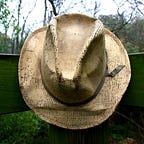Faces in the Crowd
A Tale of Two Photos
Alfred Eisenstaedt and Gordon Parks are photographers associated with iconic images of the 20th Century, notably a kiss in Times Square after WWII, and a woman holding her broom and mop posed in front of a large American flag. They captured the famous and powerful alongside the everyday, sometimes with humor, other times with an unflinching gaze at crisis or injustice. Their careers mirrored the rise of photography and photojournalism, each making a name for himself in publications like Life Magazine. While they are known for having captured important people and moments of the times, arguably their most interesting work is candid, showing people lounging, working, embracing, waiting, or thinking. Two particularly striking pictures illustrate this.
Take Eisenstaedt’s Children at the Puppet Theatre, 1963. It is a simple idea, watching children’s faces react to a story, which then provides us with a story. We see rows of faces, mostly young girls, with some of them screaming. One at the far left shows us how loud the screams are with hands over the ears. Some of the screams express immediate terror, like a girl in the left center of the frame, but others, accompanied by gestures, suggest that they are participants in the story, providing instructions or warnings. The one occupying much of the top center has a hand extended in an effort, it would appear, to get a puppet’s attention.
A remarkable element of the photo is that our eyes are not necessarily drawn to the tumultuous center, but to a bottom corner occupied by two gentle faces. They are both in light colors, standing out against surrounding darker shades. One rests her head on the other, detached, possibly exhausted, her unfocused eyes appearing to take notice of the photographer. Her detachment also suggests that the events are even more real to her then to those of the screaming participants. This is even more the case with the wonderful expression of the girl she leans into, her frown and wide eyes expressing both apprehension and wonderment. This is the face of authenticity, overwhelmed by what is happening in front of and behind her.
The show the kids were watching was Saint George and the Dragon, in which (spoiler alert) the dragon is slain. What we see is reaction to the climax of the story. This picture is part of a series taken throughout the puppet show, so we can be reassured by also seeing the protagonists of our story smiling and laughing in other pictures. The excitement induced by the climax likely passed shortly thereafter.
Gordon Parks’ photo of boys looking through a car window in Harlem (1943) similarly gathers a group of faces together to allow for a moment of glances and expressions to suggest a larger narrative. In this case they stand outside of a car that holds the photographer. Judging from their reactions, what appears to attract their attention, the story might be the car itself, the man inside the car, or the event of gathering together in an act of group curiosity. Some kids smile, some absently fixate, and some vie for position. Unlike the puppet show, this uses a frame within a frame, the car window, so that the background is nothing but faces.
The dominant figure occupies a spot near center, standing apart due to his direct eye contact with the camera. His expression is ambiguous, a resting face that is neither forcefully communicating nor masking feelings. His eyes are highlighted by the window, partially open, drawing a faint line across his face. The stillness of his posture seems to amplify the surrounding motion.
Intended or not, the window takes on symbolic significance. The boys can see a place they cannot enter. In some faces there is resignation, but for the stoic figure watching the eye of the camera, one senses resolve, or at least an understanding that his imposed alienation is an injustice. Given the time and place, we can wonder whether the window should be seen as half closed or half open. Parks was pioneering in his perspective of people often ignored by popular photography, so it is consistent with this mission to read the image through the wider context of disparity.
Nostalgia may provide part of the attraction to photos like these, both Eisenstaedt’s and Parks’, at least in the sense that a glance can immediately remove us from the present. Beyond that, though, there is something about the expressions captured that resonates more deeply. A study of the images has us reconstructing the lives of these kids, wondering what they may have grown into, what kinds of dragons they had to slay, or whether they made it to the other side of the window.
